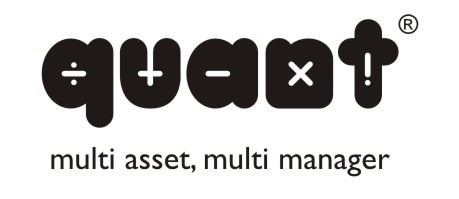Scheme type
AMC
Risk appetite
Rating
Returns

"Quant Multi Asset Fund-Growth Option - Regular Plan"
Min. investment
Rs. 1000.0
5 Year Returns
31.43%

"ICICI Prudential Retirement Fund - Pure Equity - Growth Option"
Min. investment
Rs. 100.0
5 Year Returns
30.18%

"JM Aggressive Hybrid Fund (Regular) -Growth Option"
Min. investment
Rs. 100.0
5 Year Returns
27.87%

"Quant Absolute Fund - Growth Option - Regular Plan"
Min. investment
Rs. 1000.0
5 Year Returns
27.62%

"ICICI Prudential Equity & Debt Fund - Growth"
Min. investment
Rs. 100.0
5 Year Returns
27.48%

"Bank Of India Mid & Small Cap Equity & Debt Fund - Regular Plan Growth"
Min. investment
Rs. 1000.0
5 Year Returns
26.46%

"HDFC Balanced Advantage Fund - Growth Plan"
Min. investment
Rs. 100.0
5 Year Returns
26.28%

"ICICI Prudential Multi-Asset Fund - Growth"
Min. investment
Rs. 100.0
5 Year Returns
25.10%

"Nippon India Retirement Fund- Wealth Creation Scheme- Growth Plan - Growth Option"
Min. investment
Rs. 500.0
5 Year Returns
24.85%

"UTI Aggressive Hybrid Fund - Regular Plan - Growth"
Min. investment
Rs. 500.0
5 Year Returns
23.50%

"ICICI Prudential Retirement Fund - Hybrid Aggressive - Growth Option"
Min. investment
Rs. 100.0
5 Year Returns
22.50%

"Mahindra Manulife Aggressive Hybrid Fund - Regular Plan - Growth"
Min. investment
Rs. 500.0
5 Year Returns
22.48%








































Frequently asked questions
How to find the best hybrid fund?
Hybrid funds are evaluated on the basis of consistency in return, fund management team, vintage, corpus, risk, return, and expense ratio. The best hybrid funds are those which consistently lie in the top 25% of their peer group over a period of time. However, it is important to see the risk that they have taken to achieve those returns. It is also important to look at the launch date to understand the period of existence and performance across the period.
What is the difference between hybrid fund and balanced fund?
Hybrid funds are funds that invest in a blend of more than one asset class. These could be debt/fixed deposit type of securities, equity, commodities (gold). Mostly hybrid funds invest in debt and equity in various proportions.
Balanced funds are just one type of hybrid funds. The name suggests balanced funds invest an equal amount in stocks and FD like instruments.
Is it safe to invest in hybrid funds?
Even though hybrid Funds are considered riskier than debt funds, they are safer than equity funds. They offer comparatively returns and lower risks.
What are the different types of Hybrid Mutual Funds?
According to SEBI, there are seven types of Hybrid Mutual Funds: Conservative Hybrid Fund, Balanced Hybrid Fund, Aggressive Hybrid Fund, Dynamic Asset Allocation/Balanced Advantage Fund, Multi-Asset Allocation Fund, Arbitrage Hybrid Fund, and Equity Savings Fund.
How can I invest in Hybrid Mutual Funds?
You can invest in hybrid mutual funds by researching different options, selecting an online investment platform, completing KYC details, and deciding whether to invest a lump sum or through a Systematic Investment Plan (SIP).
Are Hybrid Funds good investments for long-term goals?
Yes, hybrid funds can be good for long-term goals such as retirement or buying a house, as they offer a balanced approach between growth and stability.
Can I get regular income from Hybrid Mutual Funds?
Some hybrid funds provide regular income through dividends or periodic withdrawals, making them suitable for investors seeking regular returns along with growth.
What is the minimum investment required for Hybrid Mutual Funds?
The minimum investment amount varies by fund and can range from a few hundred to a few thousand rupees. Check specific fund requirements before investing.
Can I withdraw my investment from Hybrid Mutual Funds anytime?
Many hybrid funds offer flexibility with no lock-in period, allowing you to withdraw your investment at any time, though it is advisable to stay invested for the long term to achieve desired returns.
What are the advantages of Hybrid Funds?
Hybrid funds offer a balanced risk-return profile, combining equity and debt to achieve diversification. They provide potential for capital appreciation while maintaining stability, making them suitable for investors seeking moderate growth with reduced volatility.
What is the difference between Hybrid and Debt Mutual Funds?
Hybrid funds invest in both equity and debt, aiming for growth and stability, while debt mutual funds focus solely on fixed-income securities. This makes hybrid funds riskier but potentially more rewarding, appealing to diverse investor needs.
What are the risks of investing in a hybrid fund?
Investing in hybrid funds involves market volatility risk, as the equity component can fluctuate. Additionally, interest rate risks affect the debt portion, and changes in economic conditions can impact overall fund performance, leading to unpredictable returns.
What are the main features of a hybrid fund?
Hybrid funds typically combine various asset classes, including equities and debt, offering diversification. They have a balanced approach to risk and returns, catering to different investor profiles, and often feature flexibility in asset allocation to adapt to market conditions.
Which is better hybrid or equity fund?
The choice between hybrid and equity funds depends on individual risk tolerance and investment objectives. Hybrid funds offer diversification and lower risk, while equity funds aim for higher growth potential but come with higher risk.
Are hybrid funds a good investment?
Hybrid funds can be beneficial for investors seeking a balance between growth and income. They offer diversification and reduced risk compared to pure equity funds, making them suitable for moderate risk tolerance.
What is the return rate of hybrid fund?
The return rate of hybrid funds varies depending on the market conditions and the specific fund's investment strategy. Historically, hybrid funds have offered moderate returns, typically higher than fixed-income funds but lower than pure equity funds.
Are hybrid mutual funds taxable?
Yes, hybrid mutual funds are subject to taxation on capital gains.
Why should you invest in a hybrid mutual fund?
Investing in a hybrid mutual fund offers diversification by combining equities and bonds, reducing risk while aiming for higher returns. This balance suits various market conditions, providing stability from bonds and growth potential from equities. Ideal for moderate risk-takers, hybrid funds simplify portfolio management and offer the potential for steady income and capital appreciation over time, making them a versatile investment choice.






